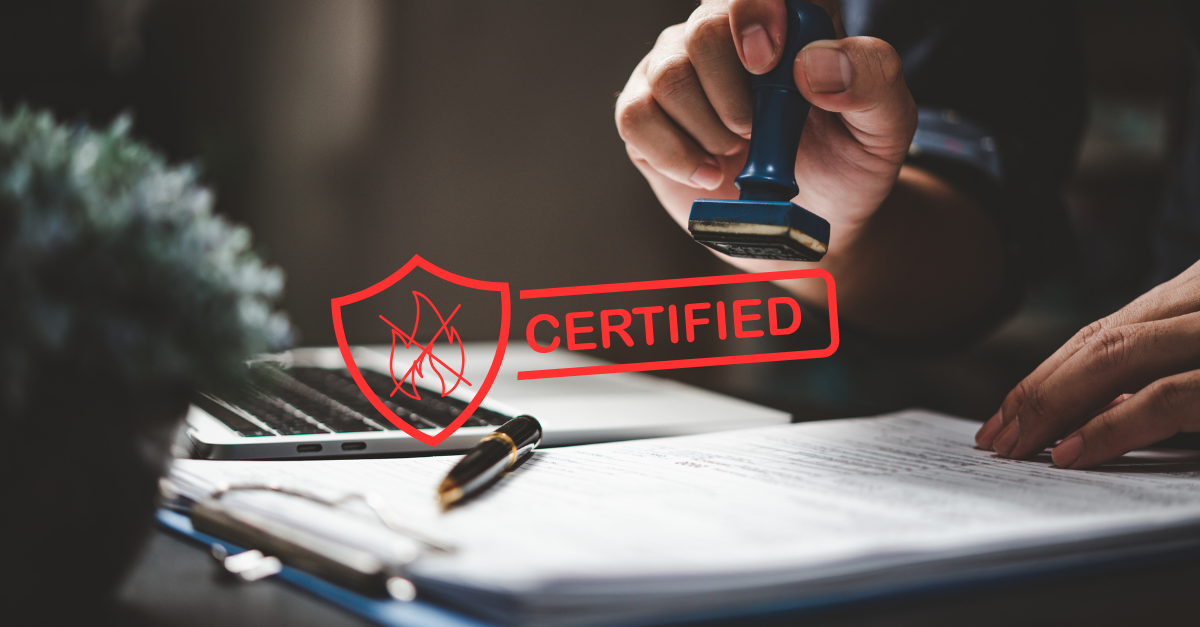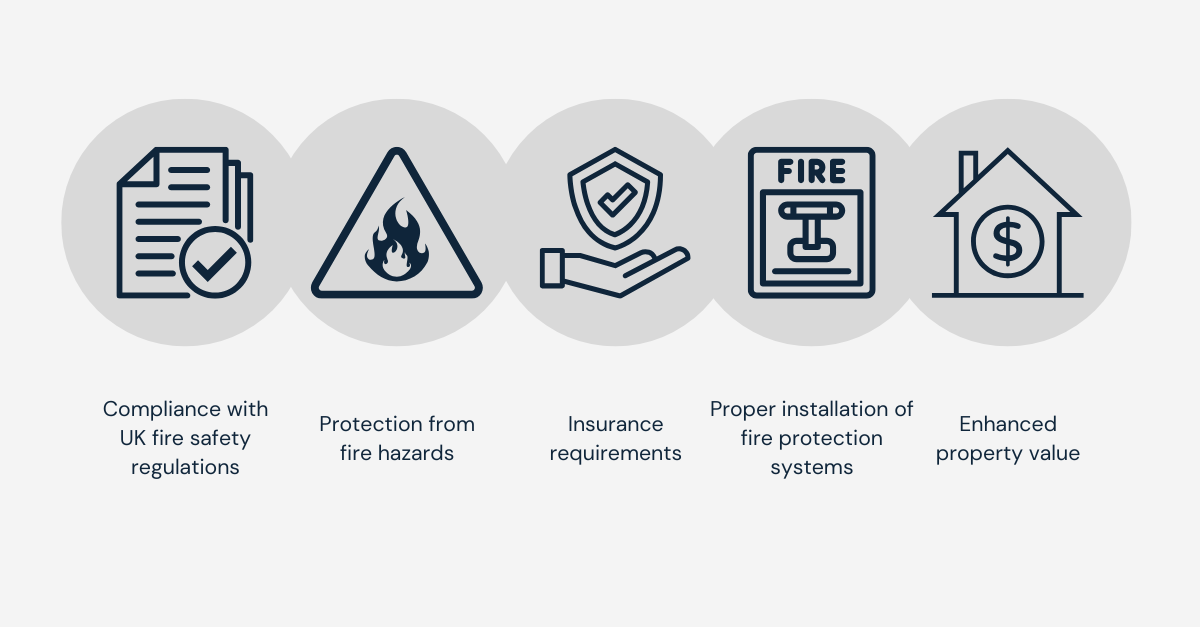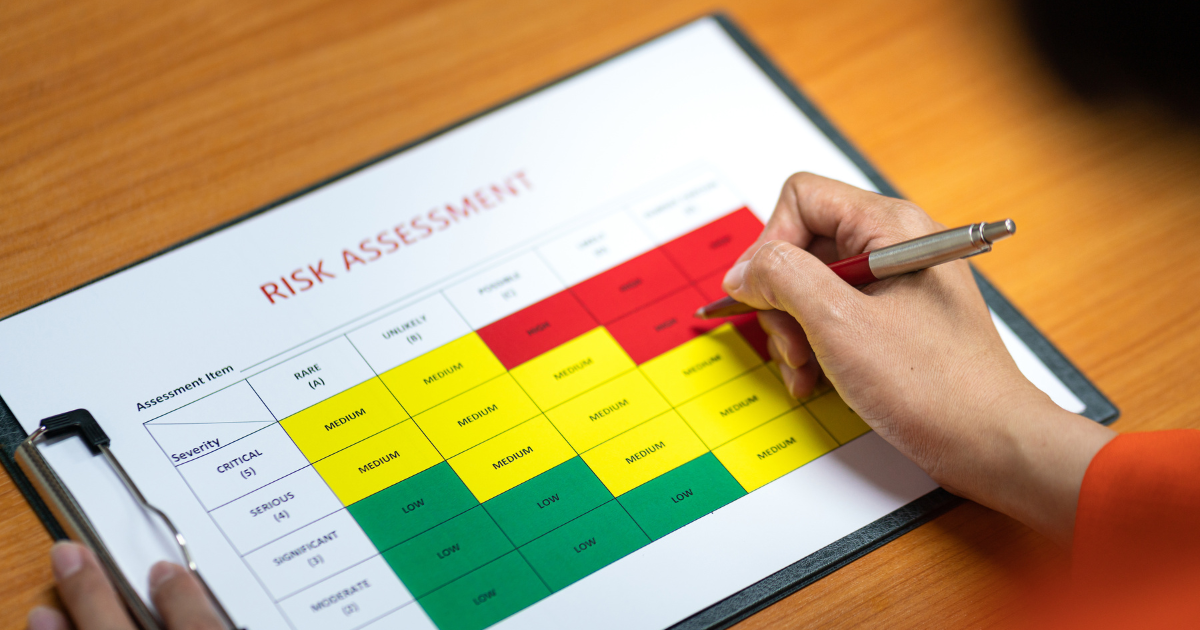How to get a fire safety certificate

Obtaining a fire safety certificate is essential for compliance with UK fire safety regulations. Whether you are a business owner, landlord, or property manager, understanding the process helps protect lives and property. In this guide, we explain everything you need to know, including requirements, costs, and timelines.
What is a fire safety certificate?
A fire safety certificate is an official document that confirms a building or premises comply with fire safety regulations in the UK. It is issued after a fire safety inspection verifies that all required fire protection measures are in place, including fire extinguishers, emergency exits, and fire-resistant materials.
The importance of fire safety compliance
Complying with fire safety England regulations is not just a legal obligation, it’s a moral responsibility. Proper fire safety measures protect occupants from fire hazards and reduce the risk of property damage. Without a fire safety certificate, property owners may face legal penalties and increased insurance costs.
Why do you require a fire safety certificate?
A fire safety certificate is legally required for many buildings. Some key reasons for obtaining this certification include:
- Compliance with UK fire safety regulations: Avoid fines and legal issues.
- Protection from fire hazards: Ensure the safety of occupants.
- Insurance requirements: Many insurers require a valid fire safety certificate.
- Proper installation of fire protection systems: This includes fire extinguishers, alarms, and smoke detectors.
- Enhanced property value: A certified property is more attractive to tenants and buyers.

Steps to obtain a fire safety certificate
The process of obtaining a fire safety certificate in the UK involves several steps. Below is a breakdown of what to expect:
Fire and safety certification requirements
To qualify for a fire safety certificate, you must meet specific requirements, including:
- Conduct a fire safety inspection and risk assessment.
- Install fire extinguishers, alarms, and smoke detectors.
- Use fire-retardant fabrics and fire-resistant building materials.
- Ensure clear and accessible emergency exits.
- Implement fire safety measures, including fire drills and evacuation procedures.
- Maintain compliance documentation for authorities.
How the procedure works
- Fire risk assessment: Identify potential fire hazards and evaluate risks.
- Implementation of safety measures: Install fire protection systems, including fire extinguishers and smoke detectors.
- Inspection by authorities: A fire safety inspector evaluates compliance with UK fire safety regulations.
- Issuance of fire safety certificate: If all requirements are met, the certificate is granted.
- Ongoing compliance: Regular inspections and maintenance ensure continued adherence to fire safety standards.
Frequently asked questions about fire safety certificates
Cost of a fire safety certificate
The cost of a fire safety certificate varies depending on factors such as property size, fire safety inspection fees, and necessary modifications. In the UK, prices typically range from £200 to £1,000. Additional costs may arise if the property requires significant upgrades to meet fire protection standards.
How long does it take to obtain a fire safety certificate?
The timeline for obtaining a fire safety certificate, whether online or in person, can range from a few weeks to several months, depending on the complexity of the inspection and compliance adjustments required. Properties with pre-existing fire protection measures typically receive certification faster than those requiring significant modifications..
Who needs a fire safety certificate?
A fire safety certificate is required for:
- Commercial property owners.
- Landlords (as per fire safety regulations for rental properties).
- Public buildings, including hotels, theatres, and hospitals.
- Educational institutions, healthcare facilities, and office buildings.
- Any establishment subject to fire safety regulations in England.
The role of fire-resistant materials in certification
Using UK-compliant fire-retardant materials is essential for obtaining a fire safety certificate. These materials, such as flame-resistant curtains and upholstery, help slow down fire spread and provide additional protection in public and commercial spaces. Compliance with UK fire safety regulations ensures that all textiles and furnishings meet the required safety standards.
Final thoughts
Ensuring compliance with UK fire safety regulations is not only a legal obligation but also a critical step in safeguarding people and property. If you are wondering how to obtain a fire safety certificate in the UK, follow the outlined steps, meet the necessary requirements, and consult with local fire safety authorities.
By adhering to fire safety measures, including proper fire protection, regular fire safety inspections, and using fire-retardant fabrics, property owners can create safer environments. For more information about fire protection and UK fire-retardant fabric regulations, contact our team. We specialise in manufacturing fire-resistant fabrics designed to meet safety standards for various industries.
Subscribe to our newsletter
Receive all communications in your email to stay up to date with our news, as well as news and advice about the sector.
Latest published articles
Do you need advice?
We collaborate with you to develop custom designs tailored to the needs of each project, creating the fabric according to aesthetic, quality, or usage requirements.
Get in touch with us, and we will advise you on our products, or request a free sample.



